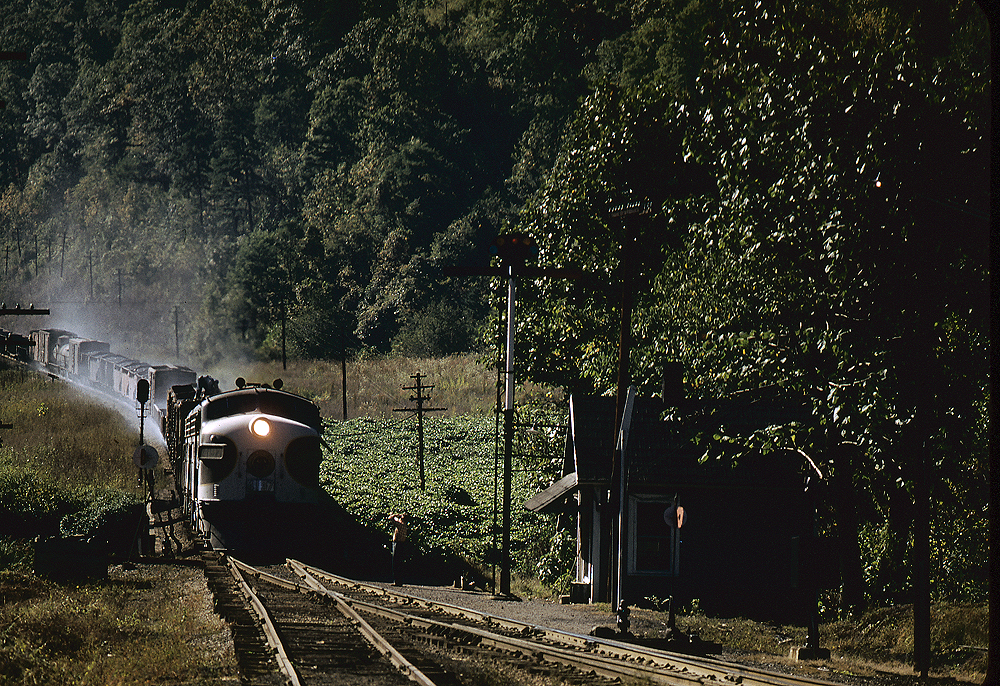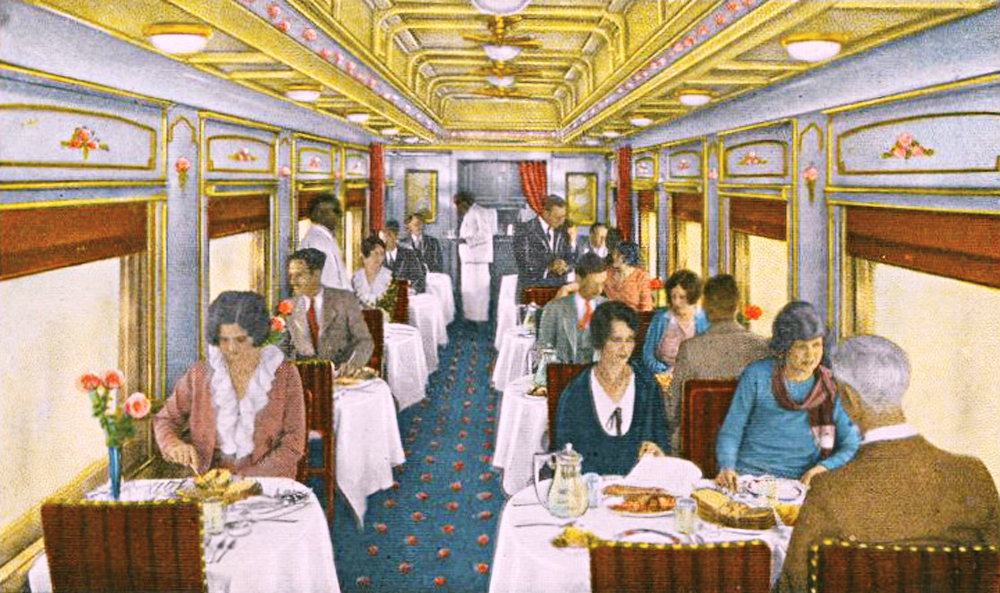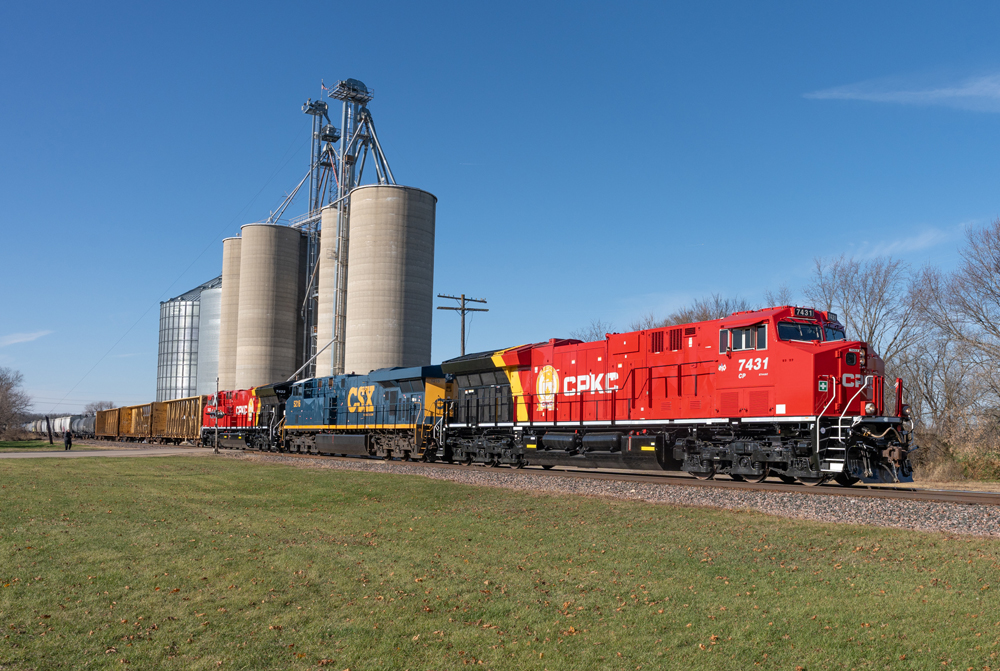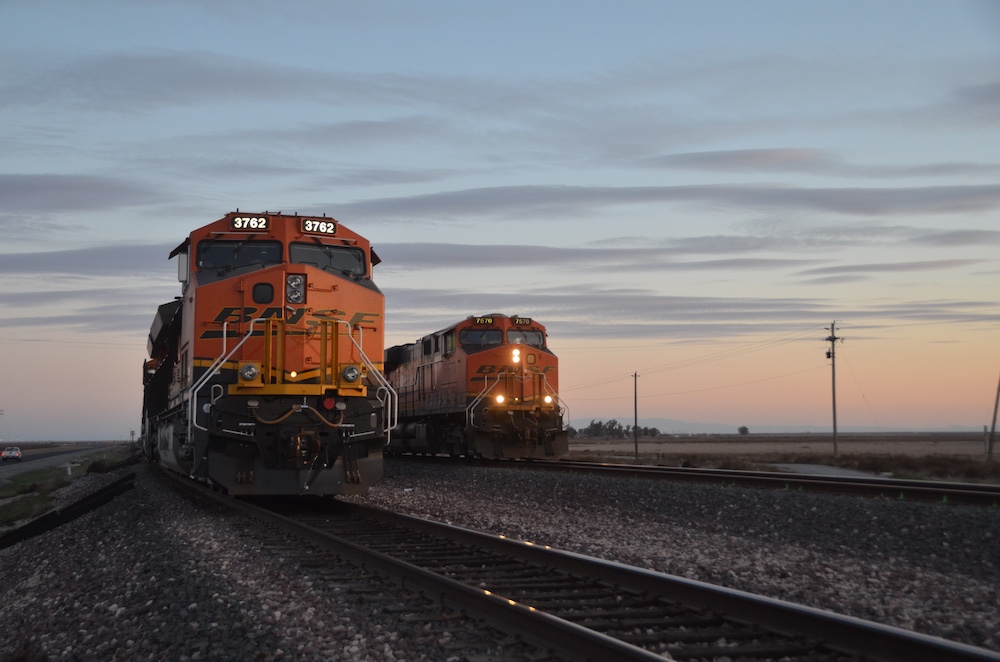West Side Freight Line
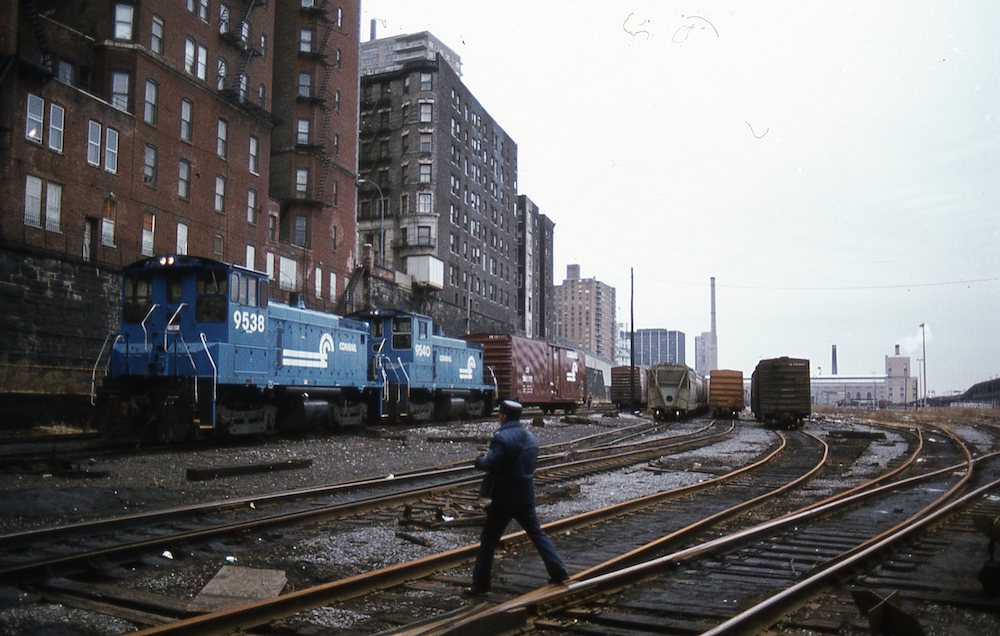
New York Central’s West Side Freight Line, more formally named the 30th Street Branch, was the only direct freight railroad into Manhattan. It was just 10 miles long but maintained to mainline standards, and was even electrified for three decades. Vital for freight, mail, and express into the 1960s, it afterward saw a protracted decline. By 1982, under Conrail, one customer remained: The New York Times, which received rail shipments of newsprint from Canada.
That March began “30th Street’s” final days. Ironically and briefly, this newsprint was trucked to a just-built New Jersey plant: It was a convoluted shipping move on the eve of ending. Subsequent cars would be more directly routed to the Jersey plant. The other rail customers on Manhattan’s West Side had evaporated over a three-decade span. Lesser known, and rarely referenced in employee timetables, was an extension to lower Manhattan’s St John’s Park in the meat-packing district.
This part of Manhattan’s once very blue-collar West Side was dubbed Hell’s Kitchen. Today, a gentrified lower West Side hosts the lower elevated portion as Manhattan’s High-Line Park: an area also of restaurants, galleries, condos, museums, and near the Hudson River waterfront.
The railroad’s West Side plan involved closing for a lengthy service hiatus and conversion from a downgraded freight secondary into Amtrak’s Empire Corridor link from Spuyten Duyvil to Pennsylvania Station. A tube was bored about 1990 from the old freight line above 30th Street, curving down to Penn Station.
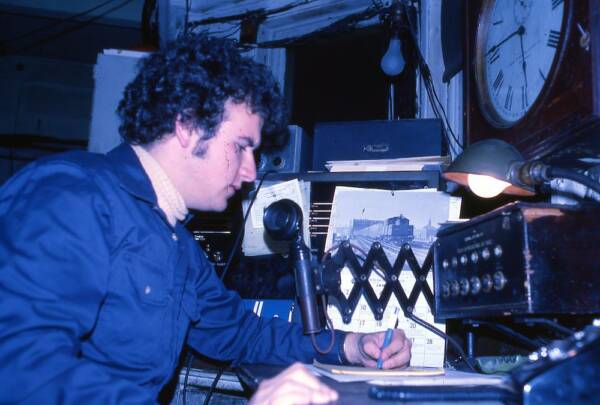
Conrail had one oddball task before ceding the trackage to Amtrak for the multi-year rebuild — the removal of two privately owned passenger cars at the now-unused yard down at West 30th Street belonging to rail enthusiast and Metropolitan Transit Authority real estate staffer Peter Obletz.
Obletz’s cars were the New York Central No. 404, a dining section from a twin-unit diner, and an ex-Santa Fe lunch-counter dormitory car (since, converted to the privately owned diner, Epicurious). The cars were in a fenced-off area near a closed New York Central brick yard office. Today the West 30th Street Yard is an MTA/Long Island Rail Road day-storage yard for Penn Station. This yard was once the New York & Hudson River Railroad’s southern terminus, then simply named The Hudson River Railroad, when completed in 1849. Big changes began in the late 1860s when Commodore Vanderbilt acquired the New York & Harlem: he built the seven-mile Spuyten Duyvil & Port Morris Railroad to access the Harlem Line, permitting Hudson trains to reach the first Grand Central Station in central Manhattan in 1871. Grand Central then was the eastern end of a developing greater New York Central System Vanderbilt was binding together to Chicago.
With virtually all passenger traffic diverted to Grand Central, the West Side line’s importance grew as only NYC had direct freight access to Manhattan Island (The New Haven did reach the Bronx). Other railroads reached Manhattan Island via their marine fleets of tugs and barges and river piers. Some of these operated small service yards adjacent to their marine accesses. NYC also maintained a robust marine operation, interchanging with roughly eight New Jersey railroads. This once-vibrant cross-harbor trade dried up by the early 1970s.
The local passenger trains operated from the Bronx to 30th Street were discontinued by the early 1930s. Other passenger moves on the West Side were unscheduled and included some rail enthusiast excursions. The Ringling Bros. and Barnum & Bailey Circus also used the 30th Street Yard for its circus train into the 1970s.
And then there were the rumors. My favorite involved comedian Jackie Gleason storing a private passenger train at 30th Street but research quickly disproved that. Jackie Gleason indeed traveled aboard private cars, but he simply chartered available equipment.
All things come to an end, and I got advance word of the Conrail run to collect Mr. Obletz’s passenger cars when working as an extra-list operator assigned third trick — the midnight shift — at Spuyten Duyvil’s DV Tower. Naturally, I told a couple of close friends about the special move. One of them, Walter, a Grand Central yardmaster, came along. He arrived at 30th Street by bicycling from lower Manhattan.
The move was simple. An Oak Point road-switcher, I believe it was OP-11, crept down from 72nd Street Yard to 30th Street to haul away the two private passenger cars. Mr. Obletz was there with a friend as car attendants. These cars were to be set out on track 77, a short siding behind DV tower. OP-11 then would continue to Oak Point, finishing up. Later that night, Conrail’s Oak Point to Selkirk freight would take the cars west.
A pair of EMD SW1500s of Penn Central early 1970s vintage did the honors. At the 72nd Street Yard we dropped four newsprint loads at the New York Times’ track and left a handful of cars there from other work, mostly at Yonkers.
Frank Sorci was the engineer. Having our group tagging along annoyed him but he went along with everything and even posed for a photo. Going south (eastbound technically), Frank parked his train with Conductor Morgan Davis, for a spell to play cards with the conductor and brakeman, possibly just to make me nervous about missing the afternoon light.
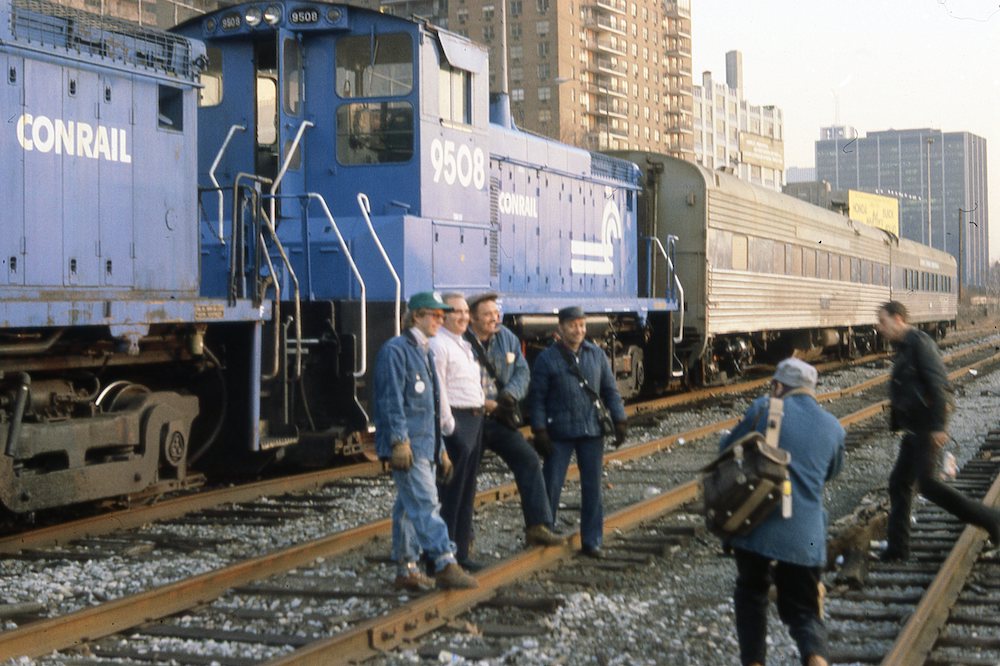
The car pick-up at 30th Street was uneventful. A few fans showed upon reaching 72nd Street, and some daylight remained for viewing. Here, after stopping briefly for pictures, the crew grabbed six empty newsprint and other cars and headed back towards Oak Point. A quick stop at DV was made for the passenger car drop. Mr. Obletz asked if I could run him to a supermarket so he could ice up. He bought food and 10 bags of ice to fill the lunch counter’s ice storage to serve as a temporary icebox. There was no lighting or heat on the cars, just flashlights.
And that was that for passenger moves on the old 30th Street Branch. Soon it was out of service. Amtrak’s rebuilding project (including Spuyten Duyvil’s swing bridge) began a couple of years later, with the line re-opening for Amtrak in 1991.
Updated March 20, 2024 to correct Amtrak re-opening date.






